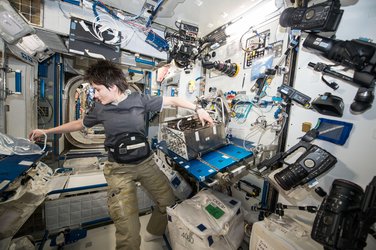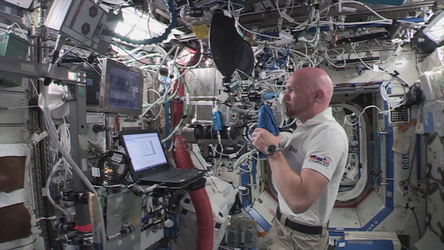Accept all cookies Accept only essential cookies See our Cookie Notice

About ESA
The European Space Agency (ESA) is Europe’s gateway to space. Its mission is to shape the development of Europe’s space capability and ensure that investment in space continues to deliver benefits to the citizens of Europe and the world.
Highlights
ESA - United space in Europe
This is ESA ESA facts Member States & Cooperating States Funding Director General Top management For Member State Delegations European vision European Space Policy ESA & EU Space Councils Responsibility & Sustainability Annual Report Calendar of meetings Corporate newsEstablishments & sites
ESA Headquarters ESA ESTEC ESA ESOC ESA ESRIN ESA EAC ESA ESAC Europe's Spaceport ESA ESEC ESA ECSAT Brussels Office Washington OfficeWorking with ESA
Business with ESA ESA Commercialisation Gateway Law at ESA Careers Cyber resilience at ESA IT at ESA Newsroom Partnerships Merchandising Licence Education Open Space Innovation Platform Integrity and Reporting Administrative Tribunal Health and SafetyMore about ESA
History ESA Historical Archives Exhibitions Publications Art & Culture ESA Merchandise Kids Diversity ESA Brand Centre ESA ChampionsLatest
Space in Member States
Find out more about space activities in our 23 Member States, and understand how ESA works together with their national agencies, institutions and organisations.
Science & Exploration
Exploring our Solar System and unlocking the secrets of the Universe
Go to topicAstronauts
Missions
Juice Euclid Webb Solar Orbiter BepiColombo Gaia ExoMars Cheops Exoplanet missions More missionsActivities
International Space Station Orion service module Gateway Concordia Caves & Pangaea BenefitsLatest
Space Safety
Protecting life and infrastructure on Earth and in orbit
Go to topicAsteroids
Asteroids and Planetary Defence Asteroid danger explained Flyeye telescope: asteroid detection Hera mission: asteroid deflection Near-Earth Object Coordination CentreSpace junk
About space debris Space debris by the numbers Space Environment Report In space refuelling, refurbishing and removingSafety from space
Clean Space ecodesign Zero Debris Technologies Space for Earth Supporting Sustainable DevelopmentLatest
Applications
Using space to benefit citizens and meet future challenges on Earth
Go to topicObserving the Earth
Observing the Earth Future EO Copernicus Meteorology Space for our climate Satellite missionsCommercialisation
ESA Commercialisation Gateway Open Space Innovation Platform Business Incubation ESA Space SolutionsLatest
Enabling & Support
Making space accessible and developing the technologies for the future
Go to topicBuilding missions
Space Engineering and Technology Test centre Laboratories Concurrent Design Facility Preparing for the future Shaping the Future Discovery and Preparation Advanced Concepts TeamSpace transportation
Space Transportation Ariane Vega Space Rider Future space transportation Boost! Europe's Spaceport Launches from Europe's Spaceport from 2012Latest

Deep breath
Thank you for liking
You have already liked this page, you can only like it once!
In recognition of World Asthma Day, here is ESA astronaut Alexander Gerst preparing to take preflight measurements for the Airway Monitoring experiment, which looks into inflammation of the airway.
Developed by researchers at the Karolinska Institutet in Sweden, the Airway Monitoring experiment measures astronauts’ breath to determine the health of their lungs. The potential findings will go towards developing better diagnostic tools for airway disease in patients on Earth.
How does the experiment work? The analyser measures the amount of nitric oxide in exhaled air. Too much nitric oxide suggests inflammation. Causes can be environmental, like dust or pollution, or clinical, such as asthma – at least on Earth, but what happens in space?
To find out, astronauts breathe into an analyser at normal pressure and then in the reduced pressure of the Quest airlock, which simulates the pressure of future habitats on Mars and lunar colonies. The measurements are then compared to the same reduced and ambient pressure data taken before flight to understand the effects of weightlessness on airway health.
Can you spot the gloves hanging from the ceiling? They are handy low-tech visual indicators of air pressure. “The gloves give simple, low-tech feedback on the surrounding pressure and grow with increased altitude/reduced pressure," explains Principal Investigator Lars Karlsson.
In space, astronauts are essentially fish out of water. Understanding how to track, diagnose and treat lung inflammation is important for their safety.
The experiment draws on a study of airway inflammation that ran on the Station from 2005 to 2008. Preliminary results have been surprising. As expected, nitric oxide levels were lower when astronauts were in space, but they found that the levels initially decreased just before flight. Researchers are not yet sure why this is the case.
If what is considered a normal level of nitric oxide in humans on Earth could, in fact, be a sign of airway inflammation for astronauts in space, then researchers have a more accurate standard to conduct further research on lung health in space.
This information is key to ensuring the health and safety of astronauts on long missions taking them further from Earth.
The experiment began with ESA astronaut Samantha Cristofretti’s 2015 mission and measurements have been gathered by eight astronauts so far, including ESA astronaut Tim Peake, and soon Alexander.
Alexander will hitch a ride to the Space Station in a Soyuz spacecraft in June for the six-month Horizons mission. Be sure to follow Alexander during his mission to see more on Airway Monitoring and other top science experiments planned for Horizons. Explore the Horizons brochure for more information.
-
CREDIT
L. Karlsson -
LICENCE
ESA Standard Licence

Anne McClain Airway Monitoring

Taking Tim’s breath away

Tim airway monitoring

Samantha working on Airway Monitoring















 Germany
Germany
 Austria
Austria
 Belgium
Belgium
 Denmark
Denmark
 Spain
Spain
 Estonia
Estonia
 Finland
Finland
 France
France
 Greece
Greece
 Hungary
Hungary
 Ireland
Ireland
 Italy
Italy
 Luxembourg
Luxembourg
 Norway
Norway
 The Netherlands
The Netherlands
 Poland
Poland
 Portugal
Portugal
 Czechia
Czechia
 Romania
Romania
 United Kingdom
United Kingdom
 Slovenia
Slovenia
 Sweden
Sweden
 Switzerland
Switzerland
























